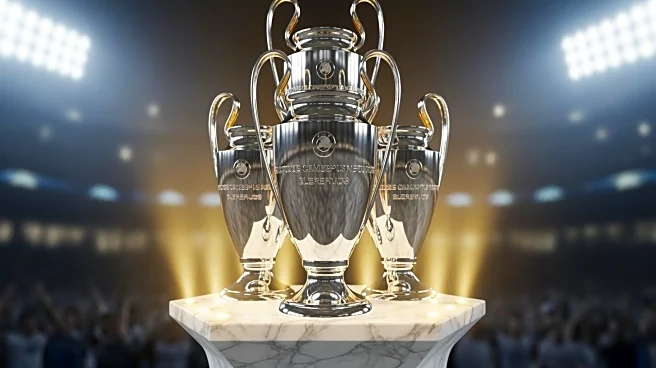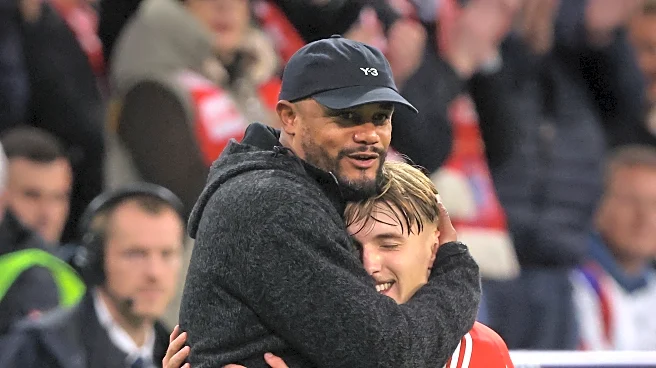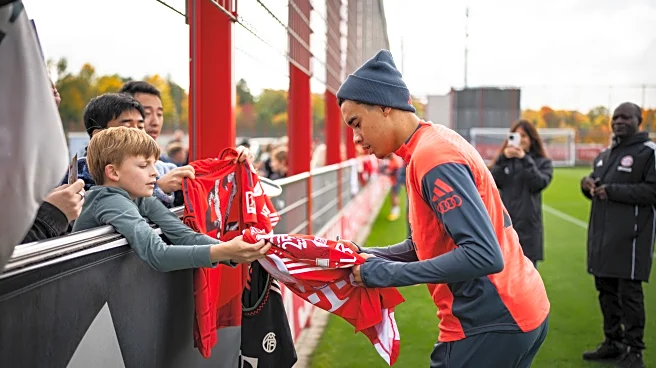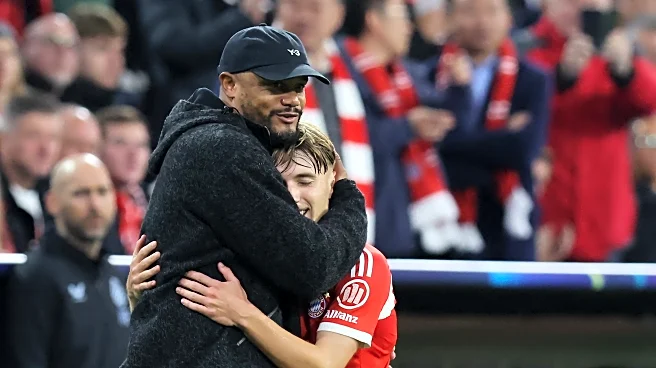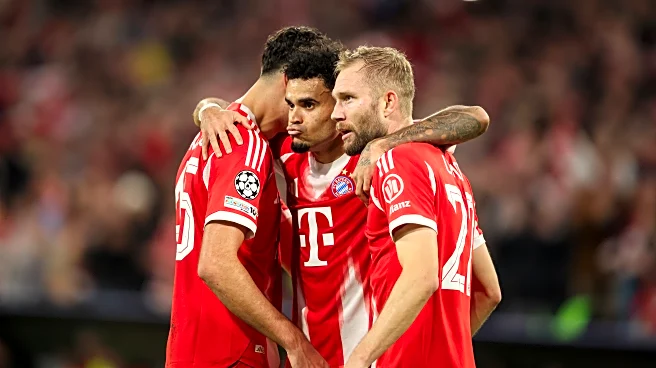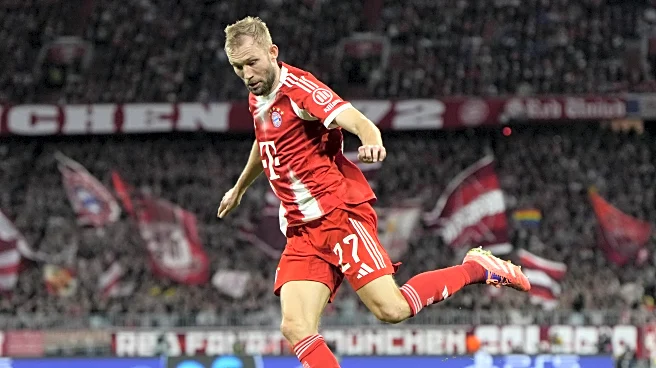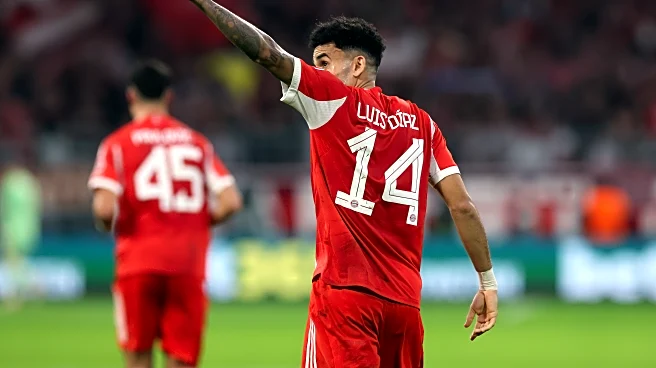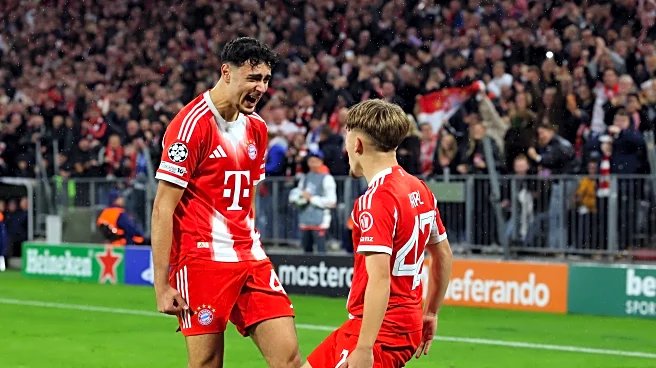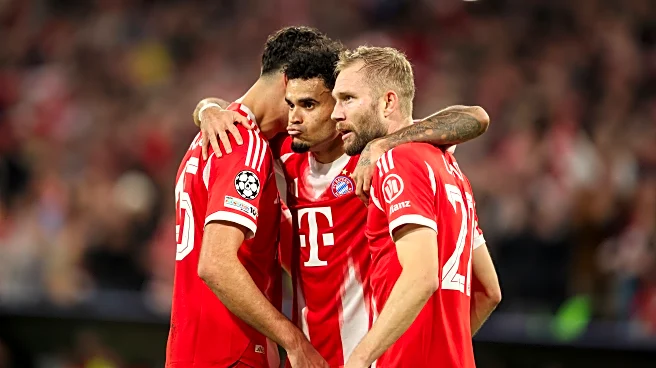What's Happening?
Bayern Munich showcased a commanding performance against Club Brugge in the Champions League, securing a 4-0 victory. The match saw Bayern Munich's young talent Lennart Karl open the scoring within the first five minutes, followed by a goal from Harry
Kane in the 15th minute. The Belgian side struggled to keep up with Bayern's relentless attack, despite maintaining a high pass accuracy. Bayern's defense, led by Jonathan Tah, effectively thwarted Brugge's attempts to break through. Konrad Laimer contributed significantly with two assists, demonstrating versatility across the field. Luis Díaz sealed the victory with a powerful goal in the 34th minute, further solidifying Bayern's dominance.
Why It's Important?
This victory reinforces Bayern Munich's position as a formidable force in the Champions League, highlighting their depth in talent and strategic prowess. The performance of young players like Lennart Karl indicates a promising future for the team, potentially influencing their long-term success in European competitions. The win also boosts Bayern's morale and confidence, setting a positive tone for upcoming matches. For Club Brugge, the defeat underscores the challenges faced by smaller clubs in competing against top-tier teams, impacting their strategy and preparation for future games.
What's Next?
Bayern Munich will likely continue to build on this momentum as they advance in the Champions League, focusing on maintaining their strong form and integrating emerging talents into their lineup. Club Brugge may need to reassess their tactics and strengthen their squad to improve their competitiveness in future matches. The outcome of this match could influence the strategies of other teams in the league, as they prepare to face Bayern Munich in upcoming fixtures.
Beyond the Headlines
The match highlights the growing importance of nurturing young talent in football, as demonstrated by Lennart Karl's impactful performance. Bayern Munich's ability to seamlessly integrate new players into their system reflects a well-structured development program, which could serve as a model for other clubs aiming to enhance their youth academies. Additionally, the game underscores the disparity between top European clubs and smaller teams, raising questions about resource allocation and competitive balance in international football.



